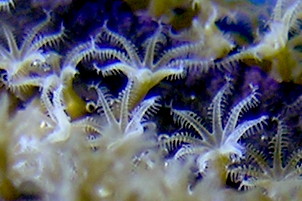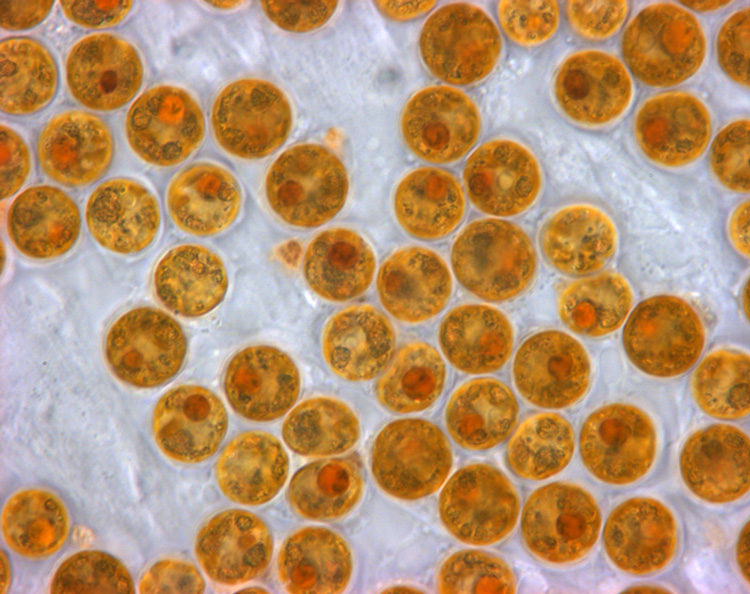|
Platygyra Lamellina
''Platygyra lamellina'', the hard brain coral, is a species of colonial Scleractinia, stony coral in the family (biology), family Merulinidae. It occurs on reefs in shallow water in the Indo-Pacific region. The International Union for Conservation of Nature has assessed its conservation status as being "Near-threatened species, near threatened". Description Colonies of ''P. lamellina'' usually form massive rounded mounds, sometimes with nodular swellings, but may also form flat plates. The corallites are long, narrow and meandering, with thick walls which are up to one and a half times the thickness of the valleys between them. The Septum (coral), septa protrude slightly and are rounded and even; they are very neatly arranged, and cross the valley walls. This coral is usually some shade of brown, with the valley bottoms sometimes being greenish or grey. It can be distinguished from the otherwise similar ''Platygyra daedalea'' by the thickness of the corallite walls and the more r ... [...More Info...] [...Related Items...] OR: [Wikipedia] [Google] [Baidu] |
Christian Gottfried Ehrenberg
Christian Gottfried Ehrenberg (19 April 1795 – 27 June 1876) was a German Natural history, naturalist, zoologist, Botany, botanist, comparative anatomist, geologist, and microscopy, microscopist. He is considered to be one of the most famous and productive scientists of his time. Early collections The son of a judge, Christian Gottfried Ehrenberg was born in Delitzsch, near Leipzig. He first studied theology at the University of Leipzig, then medicine and natural sciences in Humboldt University of Berlin, Berlin and became a friend of the famous List of explorers, explorer Alexander von Humboldt. In 1818, he completed his doctoral dissertation on fungi, ''Sylvae mycologicae Berolinenses.'' In 1820–1825, on a scientific expedition to the Middle East with his friend Wilhelm Hemprich, he collected thousands of specimens of plants and animals. He investigated parts of Egypt, the Libyan Desert, the Nile, Nile valley and the northern coasts of the Red Sea, where he made a special ... [...More Info...] [...Related Items...] OR: [Wikipedia] [Google] [Baidu] |
Phase Of The Moon
A lunar phase or Moon phase is the apparent shape of the Moon's directly sunlit portion as viewed from the Earth. Because the Moon is tidally locked with the Earth, the same hemisphere is always facing the Earth. In common usage, the four major phases are the new moon, the first quarter, the full moon and the last quarter; the four minor phases are waxing crescent, waxing gibbous, waning gibbous, and waning crescent. A lunar month is the time between successive recurrences of the same phase: due to the eccentricity of the Moon's orbit, this duration is not perfectly constant but averages about 29.5 days. The appearance of the Moon (its phase) gradually changes over a lunar month as the relative orbital positions of the Moon around Earth, and Earth around the Sun, shift. The visible side of the Moon is sunlit to varying extents, depending on the position of the Moon in its orbit, with the sunlit portion varying from 0% (at new moon) to nearly 100% (at full moon). Phenomenon The ... [...More Info...] [...Related Items...] OR: [Wikipedia] [Google] [Baidu] |
Cnidarians Of The Pacific Ocean
Cnidaria ( ) is a phylum under kingdom Animalia containing over 11,000 species of aquatic invertebrates found both in freshwater and marine environments (predominantly the latter), including jellyfish, hydroids, sea anemones, corals and some of the smallest marine parasites. Their distinguishing features are an uncentralized nervous system distributed throughout a gelatinous body and the presence of cnidocytes or cnidoblasts, specialized cells with ejectable flagella used mainly for envenomation and capturing prey. Their bodies consist of mesoglea, a non-living, jelly-like substance, sandwiched between two layers of epithelium that are mostly one cell thick. Cnidarians are also some of the few animals that can reproduce both sexually and asexually. Cnidarians mostly have two basic body forms: swimming medusae and sessile polyps, both of which are radially symmetrical with mouths surrounded by tentacles that bear cnidocytes, which are specialized stinging cells used ... [...More Info...] [...Related Items...] OR: [Wikipedia] [Google] [Baidu] |
Symbiosis
Symbiosis (Ancient Greek : living with, companionship < : together; and ''bíōsis'': living) is any type of a close and long-term biological interaction, between two organisms of different species. The two organisms, termed symbionts, can for example be in Mutualism (biology), mutualistic, commensalism, commensalistic, or parasitism, parasitic relationships. In 1879, Heinrich Anton de Bary defined symbiosis as "the living together of unlike organisms". The term is sometimes more exclusively used in a restricted, mutualistic sense, where both symbionts contribute to each other's subsistence. This means that they benefit each other in some way. Symbiosis can be ''obligate'' (or ''obligative''), which means that one, or both of the organisms depend on each other for survival, or ''facultative'' (optional), when they can also subsist independently. Symbiosis is also classified by physical attachment. Symbionts forming a single body live ... [...More Info...] [...Related Items...] OR: [Wikipedia] [Google] [Baidu] |
Polyp (zoology)
A polyp in zoology is one of two forms found in the phylum Cnidaria, the other being the medusa (biology), medusa. Polyps are roughly cylindrical in shape and elongated at the axis of the vase-shaped body. In solitary polyps, the aboral (opposite to oral) end is attached to the substrate (biology), substrate by means of a disc-like holdfast (biology), holdfast called a pedal disc, while in colony (biology), colonies of polyps it is connected to other polyps, either directly or indirectly. The oral end contains the mouth, and is surrounded by a circlet of tentacles. Classes In the class Anthozoa, comprising the sea anemones and corals, the individual is always a polyp; in the class Hydrozoa, however, the individual may be either a polyp or a medusa (biology), medusa, with most species undergoing a biological life cycle, life cycle with both a polyp stage and a medusa stage. In the class Scyphozoa, the medusa stage is dominant, and the polyp stage may or may not be present, depen ... [...More Info...] [...Related Items...] OR: [Wikipedia] [Google] [Baidu] |
Metamorphosis
Metamorphosis is a biological process by which an animal physically develops including birth transformation or hatching, involving a conspicuous and relatively abrupt change in the animal's body structure through cell growth and differentiation. Some insects, jellyfish, fish, amphibians, mollusks, crustaceans, cnidarians, echinoderms, and tunicates undergo metamorphosis, which is often accompanied by a change of nutrition source or behavior. Animals can be divided into species that undergo complete metamorphosis (" holometaboly"), incomplete metamorphosis (" hemimetaboly"), or no metamorphosis (" ametaboly"). Generally organisms with a larval stage undergo metamorphosis, and during metamorphosis the organism loses larval characteristics. Etymology The word ''metamorphosis'' derives from Ancient Greek , "transformation, transforming", from ('), "after" and ('), "form". Hormonal control In insects, growth and metamorphosis are controlled by hormones synthesized by ... [...More Info...] [...Related Items...] OR: [Wikipedia] [Google] [Baidu] |
Zooxanthellae
Zooxanthellae (; zooxanthella) is a colloquial term for single-celled photosynthetic organisms that are able to live in symbiosis with diverse marine invertebrates including corals, jellyfish, demosponges, and nudibranchs. Most known zooxanthellae are in the dinoflagellate genus '' Symbiodinium'', but some are known from the genus '' Amphidinium'', and other taxa, as yet unidentified, may have similar endosymbiont affinities. "Zooxanthella" was originally a genus name (meaning literally "little yellow animal") given in 1881 by Karl Brandt to '' Zooxanthella nutricula'' (a mutualist of the radiolarian '' Collozoum inerme'') which has been placed in the Peridiniales. Another group of unicellular eukaryotes that partake in similar endosymbiotic relationships in both marine and freshwater habitats are green algae zoochlorellae. Zooxanthellae are photosynthetic organisms, which contain chlorophyll a and chlorophyll c, as well as the dinoflagellate pigments peridinin and diadi ... [...More Info...] [...Related Items...] OR: [Wikipedia] [Google] [Baidu] |
Planula
A planula is the free-swimming, flattened, ciliated, bilaterally symmetric larval form of various cnidarian species and also in some species of Ctenophores, which are not related to cnidarians at all. Some groups of Nemerteans also produce larvae that are very similar to the planula, which are called planuliform larva. In a few cnidarian clades, like Aplanulata and the parasitic Myxozoa, the planula larval stage has been lost. Development The planula forms either from the fertilized egg of a medusa, as is the case in scyphozoans and some hydrozoans, or from a polyp, as in the case of anthozoans. Depending on the species, the planula either metamorphoses directly into a free-swimming, miniature version of the mobile adult form, or navigates through the water until it reaches a hard substrate (many may prefer specific substrates) where it anchors and grows into a polyp. The miniature-adult types include many open-ocean scyphozoans. The attaching types include all anthozoans w ... [...More Info...] [...Related Items...] OR: [Wikipedia] [Google] [Baidu] |
New Moon
In astronomy, the new moon is the first lunar phase, when the Moon and Sun have the same ecliptic longitude. At this phase, the lunar disk is not visible to the naked eye, except when it is silhouetted against the Sun during a solar eclipse. The original meaning of the term 'new moon', which is still sometimes used in calendrical, non-astronomical contexts, is the first visible crescent of the Moon after conjunction with the Sun. This thin waxing crescent is briefly and faintly visible as the Moon gets lower in the western sky after sunset. The precise time and even the date of the appearance of the new moon by this definition will be influenced by the geographical location of the observer. The first crescent marks the beginning of the month in the Islamic calendar and in some lunisolar calendars such as the Hebrew calendar. In the Chinese calendar, the beginning of the month is marked by the last visible crescent of a waning Moon. The astronomical new moon occurs by def ... [...More Info...] [...Related Items...] OR: [Wikipedia] [Google] [Baidu] |
Hermaphrodite
A hermaphrodite () is a sexually reproducing organism that produces both male and female gametes. Animal species in which individuals are either male or female are gonochoric, which is the opposite of hermaphroditic. The individuals of many taxonomic groups of animals, primarily invertebrates, are hermaphrodites, capable of producing viable gametes of both sexes. In the great majority of tunicates, mollusks, and earthworms, hermaphroditism is a normal condition, enabling a form of sexual reproduction in which either partner can act as the female or male. Hermaphroditism is also found in some fish species, but is rare in other vertebrate groups. Most hermaphroditic species exhibit some degree of self-fertilization. The distribution of self-fertilization rates among animals is similar to that of plants, suggesting that similar pressures are operating to direct the evolution of selfing in animals and plants. A rough estimate of the number of hermaphroditic animal species ... [...More Info...] [...Related Items...] OR: [Wikipedia] [Google] [Baidu] |
Species
A species () is often defined as the largest group of organisms in which any two individuals of the appropriate sexes or mating types can produce fertile offspring, typically by sexual reproduction. It is the basic unit of Taxonomy (biology), classification and a taxonomic rank of an organism, as well as a unit of biodiversity. Other ways of defining species include their karyotype, DNA sequence, morphology (biology), morphology, behaviour, or ecological niche. In addition, palaeontologists use the concept of the chronospecies since fossil reproduction cannot be examined. The most recent rigorous estimate for the total number of species of eukaryotes is between 8 and 8.7 million. About 14% of these had been described by 2011. All species (except viruses) are given a binomial nomenclature, two-part name, a "binomen". The first part of a binomen is the name of a genus to which the species belongs. The second part is called the specific name (zoology), specific name or the specific ... [...More Info...] [...Related Items...] OR: [Wikipedia] [Google] [Baidu] |








